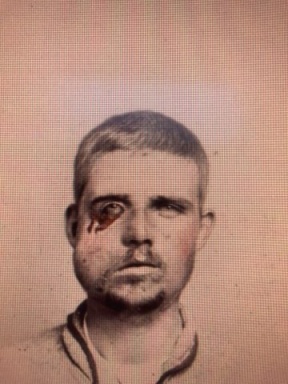An unofficial blog about the National Museum of Health and Medicine (nee the Army Medical Museum) in Silver Spring, MD. Visit for news about the museum, new projects, musing on the history of medicine and neat pictures.
Friday, March 31, 2023
Wednesday, February 1, 2023
Exhibit at Walter Reed Highlights African Americans in Civil War Medicine
Exhibit at Walter Reed Highlights African Americans in Civil War Medicine
https://www.dvidshub.net/news/437560/exhibit-walter-reed-highlights-african-americans-civil-war-medicine
Monday, January 30, 2023
Scott Schoner, former Army Medical Dept. Museum curator has passed away
Tuesday, January 24, 2023
Hunterian museum removes Irish Giant from display
London Museum Removes 'Irish Giant' Skeleton From Display
The remains of Charles Byrne, a 7-foot-7 man who died in 1783, will no longer be on public view, an effort to address what one official at the Hunterian Museum called a historical wrong.
By Claire Moses
Sunday, January 15, 2023
Monday, December 12, 2022
The former AFIP in the news
The founding as the Army Medical Museum is mentioned in passing, AFIP's name is not, and the museum's continuing existence as a separate entity isn't either.
Inside Google's Quest to Digitize Troops' Tissue Samples
Friday, December 3, 2021
Centers for Disease Control Museum on Atlas Obscura podcast
Visit a museum inside the Centers for Disease Control and Prevention in Atlanta, Georgia, which documents how public health officials have slowed the spread of disease through history.
Dec 2 2021
Monday, November 8, 2021
FDA History Office Recruiting Museum Specialist
Friday, October 8, 2021
Civil War medical photos show up in the oddest places
520 Weeks – Moritat on "All-Star Western:" "Oh, You Can Draw Hats!"
By Brian Salvatore | October 4th, 2021
http://www.multiversitycomics.com/interviews/520-weeks-moritat/
Moritat:You know, the droop in the eye? I had reference for him too, and after that, it was easy. I've mostly used a lot of the old Mathew Brady Civil War photographs to kind of get that rugged kind of look, you know, color kind of slightly frayed gun belts.

Monday, May 10, 2021
Change to Email subscription feature
Wednesday, April 21, 2021
Medicinsk Museion reopens this week
 |
THE MUSEUM OPENS AGAIN On Saturday 24 April, we will finally open the doors to our good and curious guests. Our staff is well on its way to sprucing up, putting up signs and getting ready for a safe and secure reopening. Remember bandages and Coronapas. Admission tickets must continue to be purchased in advance, and we will open ticket sales on Wednesday 21 April. Buy admission tickets here. // The museum re-opens April 24. Admission tickets must be purchased in advance. Please remember a face mask and your Corona passport. |
What to do with the Morton Crania Collection?
What Should Museums Do With the Bones of the Enslaved?
As one museum has pledged to return skulls held in an infamous collection, others, including the Smithsonian, are reckoning with their own holdings of African-American remains.
Tuesday, April 20, 2021
Morton Crania Collection to be partly repatriated
Penn Museum apologizes for its 'unethical' collection of human skulls and says it will repatriate remains of Black Philadelphians and others
- Stephan Salisbury The Philadelphia Inquirer (TNS)
- Apr 12, 2021
Friday, April 16, 2021
Army medical history exhibit opens at Frontier Army Museum
Museum exhibit spotlights military medical milestones
Source: ftleavenworthlamp.com
Author: Katie Peterson
To view the exhibit online with FAM OnCell, visit https://frontierarmymuseum.oncell.com/en/site-list-80713.html. |
Wednesday, September 16, 2020
Dr Mary Walker comic book released
Groundbreaking Civil War Doctor Showcased
Monday, August 17, 2020
Responding to the Washington Post's mistaken criticism of Hammond
Wednesday, July 22, 2020
Red Cross photo collection at Library of Congress
Behind the Scenes: an Archivist Draws on Myriad Experiences
Below is an interview with Kristen Sosinski, Archivist in the Prints & Photographs Division at the Library of Congress.
Wednesday, July 8, 2020
Melvin Shaffer interviewed on his WWII Army Medical Museum experience by local paper
Through his eyes: Green Valley man saw WWII as few did
- By Dan Shearer
- Green Valley News Jun 27, 2020
- https://www.gvnews.com/news/through-his-eyes-green-valley-man-saw-wwii-as-few-did/article_bffe155c-b89e-11ea-a9bd-b312fd0245b5.html
Tuberculosis in the African-American community photos at Library of Congress
Honoring African American Contributions in Medicine: The Black Angels
Wednesday, June 24, 2020
From Anderson’s Holler – A World War II medical photographer’s story- available now
